As an Amazon Associate, I earn from qualifying purchases with no additional costs for you.
Many wine lovers are confused about the proper way to orient their wine bottles during long-term storage. Many folks are storing their wine bottles upside down with the cork on the bottom. While this is not the preferred method, this article will examine why it may not be all that and potentially really good. It is absolutely a topic that requires a deeper look.
Is it okay to store wine bottles upside down? While storing wine horizontally (on its side) is the best, storing wine bottles upside down with the cork facing down is acceptable since you will be keeping the cork moist. Some potential issues with storing wine bottles upside down are that sediment will settle near the cork and mix with your wine, and also, with gravity pushing against the cork, you could experience slow leaks of wine through the cork.
If sediment build-up in wine isn’t an issue for you and you are willing to take your chances with gravity, storing bottles upside down can be a viable option.
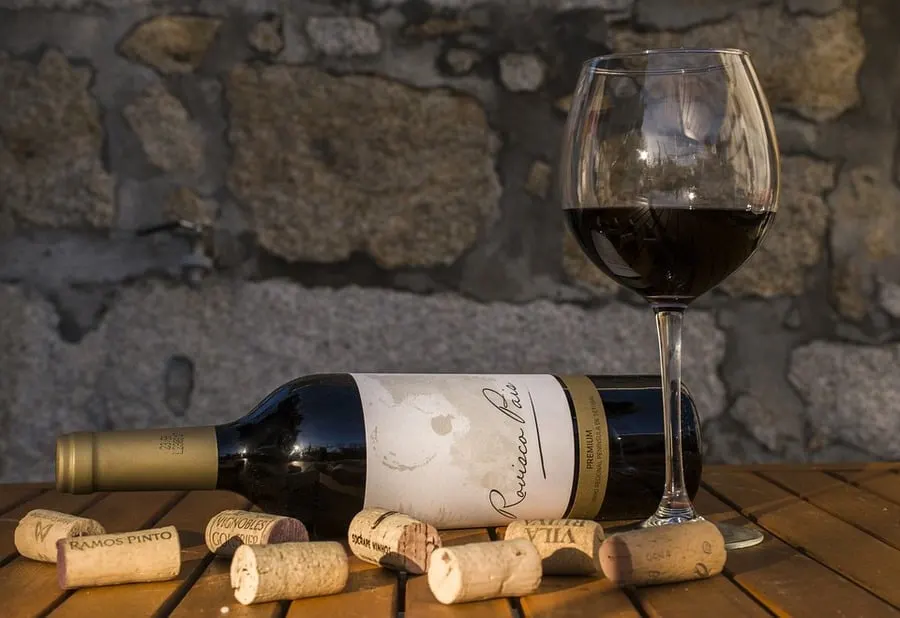
TIP: If you want to check out the best refrigerator for wine storage, I recommend trying out the Avation (18 bottles) compressor refrigerator with Wi-fi smart app control cooling system. You can find this refrigerator by clicking here (Amazon link).
Upside Down vs. Upright
Upside down would be preferred for most wine storage if your bottles have a cork. It is really important to keep your cork moist when storing wine for a long time. A dried-out cork can develop warping or tiny cracks, which will allow oxygen and potential contaminants into your wine bottle.
These external molecules can oxidize your wine or ruin it altogether. By keeping wine pressed up against the cork, you are keeping that cork moist enough to prevent cracking and warping.
If you store your wine bottles right side up, gravity will create a gap between the wine and the cork and open the door for potential cork dry-out. While lying a wine bottle on its side is preferred, storing wine upside down is still a good option.
TIP: To learn the reasons why your wine should touch the cork during storage, read this helpful article. Do you need a cork to keep wine? Find out here.
How Long Wine Bottles Can Be Stored Upside Down
You could potentially store wine upside down for years as long as you understand the risks involved. As I mentioned earlier, sediments in the wine will settle on the very bottom of a cork.
While these sediments will remain here harmlessly for the duration of the storage, once you flip your bottle back right-side-up before serving, those sediments will disperse throughout the wine and potentially into your glass. The bigger issue is gravity and its effect on your cork.
Wine will be forcing itself against your cork for months and even years. Periodically check your wine bottle for leaks. If you see any signs of leaking or movement of your cork, you need to serve that wine, or you could be looking at a real mess very soon.
How Should Wine Bottles be Oriented
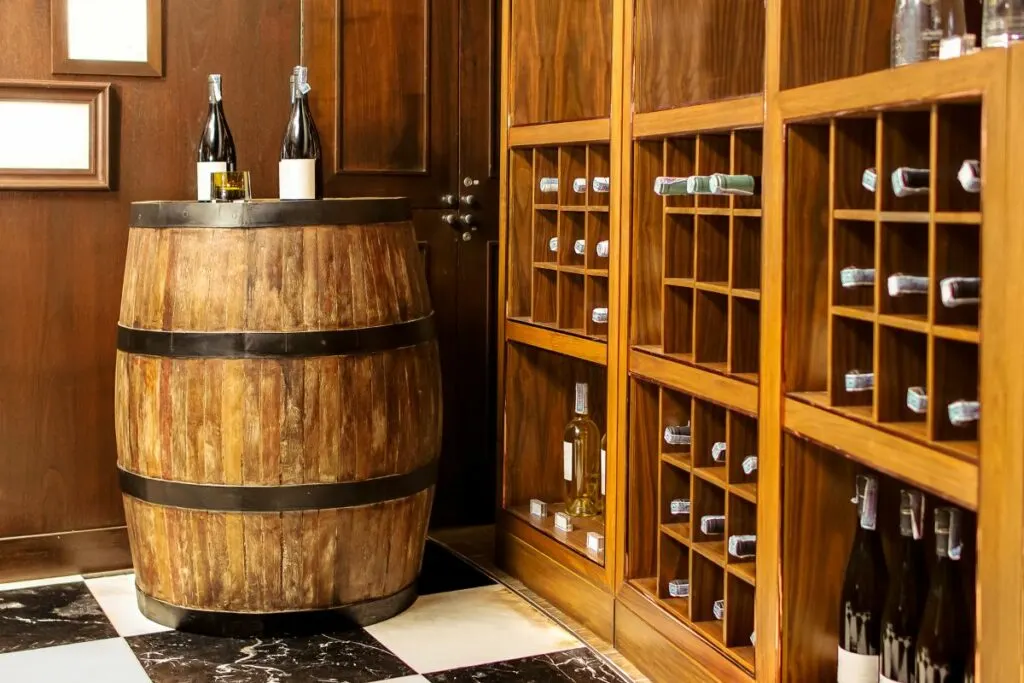
If you look at most wine racks, you’ll notice they orient the bottles horizontally on their sides. Take a walk through any underground wine cellar, and you’ll likely notice the same thing.
Most wine refrigerators also similarly orient the bottles. There is a reason so many resources are designed to be this way.
When you are dealing with a corked bottle, keeping that cork moist is important. Now it doesn’t matter for table wines you buy and drink immediately. Who cares how you store those?
You’ll be drinking them in a matter of hours anyways. Go ahead and chill those in the kitchen fridge standing upright. Also, for wine bottles with screw caps instead of corks, again, there is no need to lay them sideways. Almost every bottle with a cork should be laid on its side for optimum long-term storage.
What is the Proper Way to Store Wine?
Temperature
Exact guidelines on this vary, but it is generally accepted the ideal range for wine storage temperature is between 45°F and 65°F, with 55°F being the “sweet spot” for both reds and whites.
White wine generally requires a cooler temperature than red wines, with Champagne being the one requiring the coldest temperature. While the exact temperature is not important, ensuring you store your wine in that range will only help you out.
While you don’t want to store wine too cold or let it freeze, it is much more important that you don’t let your wine get too hot. The heat will destroy wine stored long-term. You can usually recover from storing wine too cold, but there is almost no hope of recovering wine stored too hot. (source)
TIP: For more information on the dangers of storing wine too hot, check out this article. To learn how Champagne responds to being stored too hot, check out this article.
Humidity
Humidity is another important factor potentially affecting long-term wine storage. Ideally, you will want relative humidity somewhere in the 70% to 90% range.
Humidity plays a big role in cork integrity. If you keep your wine stored in too dry a climate, the cork will dry out and could crack or warp. This will allow oxygen molecules to seep in, which is bad.
Prolonged exposure to humidity above 95%, though, could also be bad. You could develop mold on your cork which can contaminate your wine, but this is extremely rare. That 70% to 90% range is ideal.
Bottle Orientation
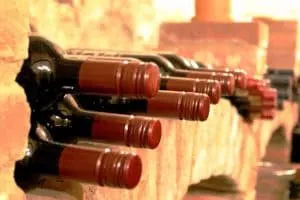
Generally speaking, the best way to orient your wine bottles is horizontally as opposed to vertically. By laying your wine bottles on their side, you are keeping wine pressed up against your cork. This serves two important purposes.
First, it keeps an airtight seal between the wine and the cork, so now oxygen molecules can enter into your wine from outside and start the oxidation process. The second and more important reason is the wine being in contact with the bottom of the cork will prevent the cork from drying out.
A cork that dries out will crack, and those microfractures can allow oxygen as well as harmful contaminants into your wine. Ultimately, you want to prevent the oxidation process from affecting your wine which occurs when oxygen interacts with wine and starts to prematurely age it.
If you store wine long-term in an upright position, the bottom of that cork can dry out and ultimately lead to less-than-perfect aging of the wine. There are some occasions when storage of wine bottles upright makes sense, but most of the time, horizontal is the right choice.
TIP: I wrote a complete article on the dangers of storing wine bottles vertically and also why sometimes you may want to store them vertically. It is worth your time to read.
Recommendation box: Everything you need to enjoy your wine as much as possible. All recommended products are personally tested and regularly used by experts from this website (Amazon links):
> Ivation Wine Cooler – Energy-efficient wine cooler for 18 bottles with Wi-fi smart app control cooling system.
> Wine Rack – Beautiful, elegant wood rack for up to 7 bottles and the choice of vertical or horizontal storage.
> Durand Wine Opener – Classic vintage wine opener (we like all these classic staff).
> YouYah Iceberg Wine Decanter – The most beautiful and handy wine decanter we personally use.
> Bormioli Rocco Wine Glasses – A set of eight elegant and traditional wine glasses made in Italy.
> Vintorio Wine Aerator – Simple but really useful wine aerator for a reasonable price.
> The Original Vacu Vin Wine Saver – The best wine saver on the market in a package with two vacuum stoppers and two wine servers.
And if you want to become a true connoisseur of wine, we recommend reading the book Wine Folly: The Essential Guide to Wine (Amazon link), where you will find all the information you need about winemaking, wine varieties, flavors, and much more.
Light Exposure & Stillness
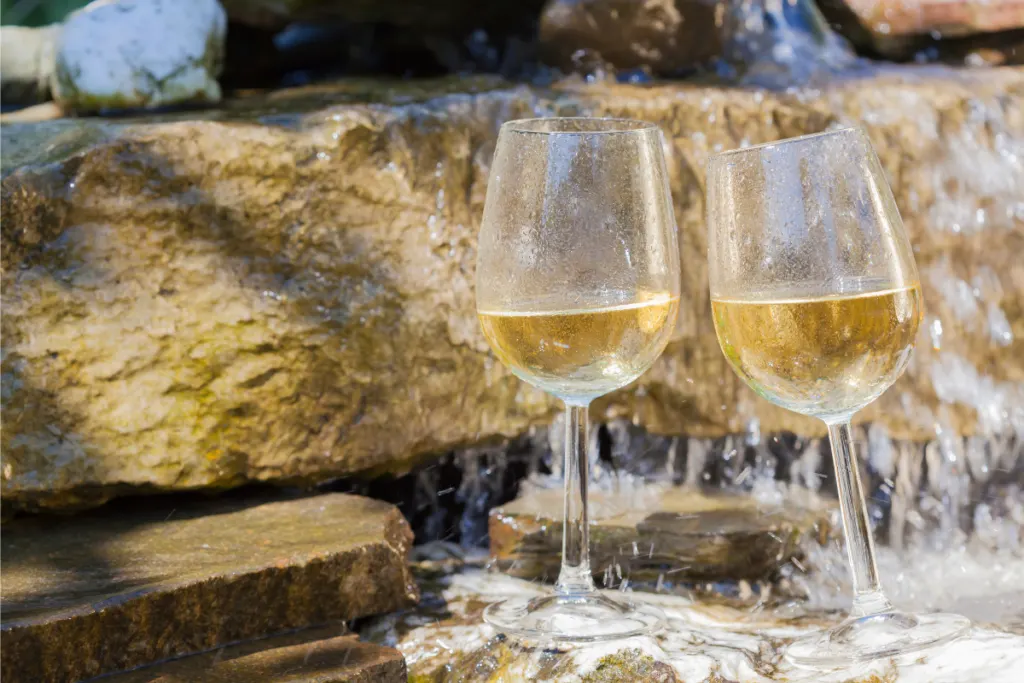
Light exposure is something that can ruin a good wine. Direct sunlight or overheard artificial light can turn a good wine bad. There is a reason why wine bottles are darkened glass.
Although the wine bottle does help, you still need to take precautions to store your wine. It is best to keep your wine bottles in a dark location, preferably on their side, away from direct light sources.
A wine cellar is great, but for most of us who can’t afford one, a wine refrigerator is a great option. A cool dark room can also be a decent solution. Vibrations are another wine-damaging factor.
Micro-vibrations can stir up the sediment in wine and lead to premature aging or fowling of the wine. This is why I recommend against long-term wine storage in a kitchen refrigerator.
Not only are kitchen refrigerators too cold for ideal storage, but they also produce tiny vibrations you can’t feel but will kill your wine. A thermoelectric wine cooler, on the other hand, will not produce these vibrations.
TIP: For a complete answer to the question of whether or not a wine refrigerator is good for wine storage, please read this helpful article. To learn what direct sunlight and artificial light can do to wine long-term, check out this article.
What About Opened Bottles of Wine?
When it comes to opened bottles of wine, do not store them upside down. If you were able to recork your wine, you do not want any gravity pushing against that cork.
You will end up with the biggest, most preventable mess on your hands. Even if you are using a vacuum-sealed wine stopper system, I still would be very nervous. If you have opened the bottle, store it upright in your kitchen fridge until you finish it off.
I just wouldn’t take a chance on storing an opened bottle upside down. That cork will not be sealed well enough to prevent the spill. That makes me nervous just thinking about someone trying it.
TIP: Are you interested in buying a wine stopper? We’ve personally tried and recommend buying one of these wine stoppers (Amazon links):
- The Original Vacu Vin Wine Saver: Our top choice. Very easy-to-use wine stopper/saver. You can enjoy a glass of fresh wine whenever you want without worrying about wasting any.
- EZBASICS Wine Saver: Great alternative to Original Vacu Vin Saver. This wine stopper keeps the flavor of wine for up to one week.
- Champagne Stopper by MiTBA: Wine stoppers for sparkling wines are different. This wine stopper seals your bottle and increases the pressure so your beverage’s bubbles won’t go to waste.
Can You Store Champagne Upside Down?
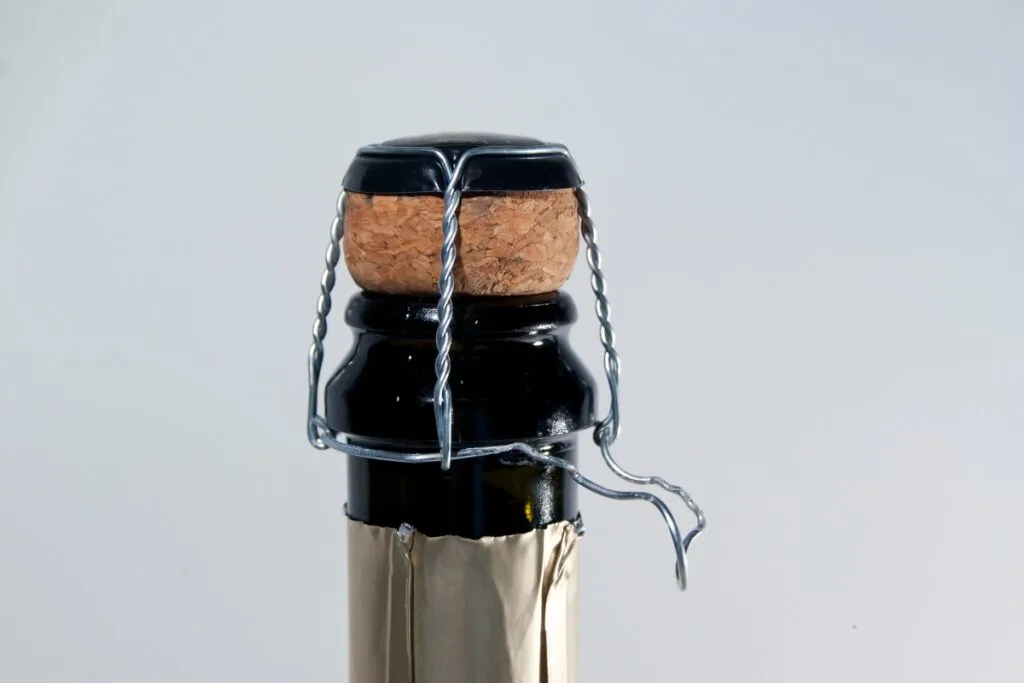
Champagne bottles have muselets to keep the cork fastened tight. A muselet is a wire cage apparatus designed to keep the cork, which is under great pressure, pressed firmly into its seat (source).
I think you should be fine storing champagne bottles upside down. The muselet is strong enough to keep the cork in place.
As is the case with wine, it is a good idea to keep your cork touching your liquid to prevent issues with the cork. Storing the Champagne bottle on its side is preferred, but you can get away with storing it upside down. I think you should be okay.
TIP: Check out this page for a complete list of wine products and accessories I love. You’ll find my recommendations for wine refrigerators, decanters, and aerators and the best place to buy wine online. Click here to see the complete listing.
